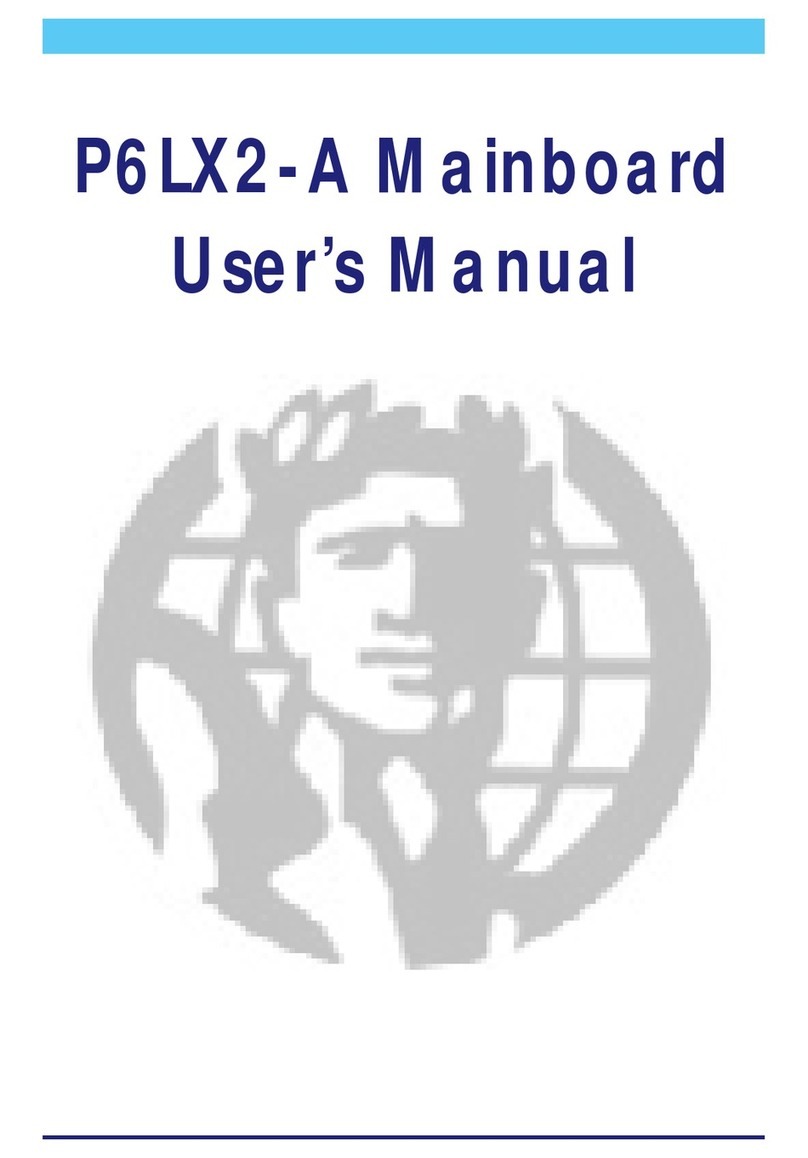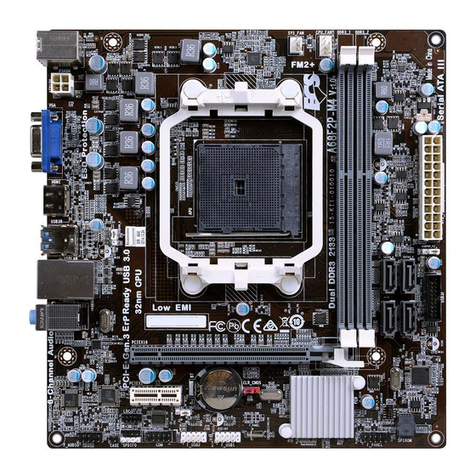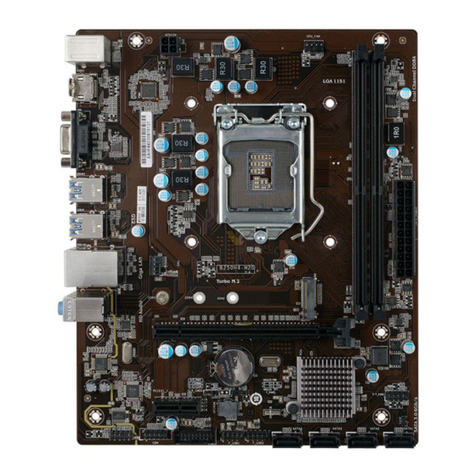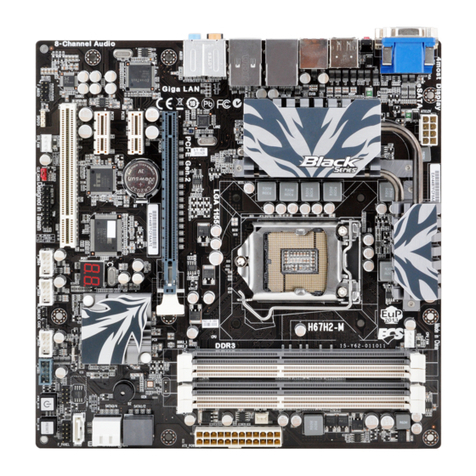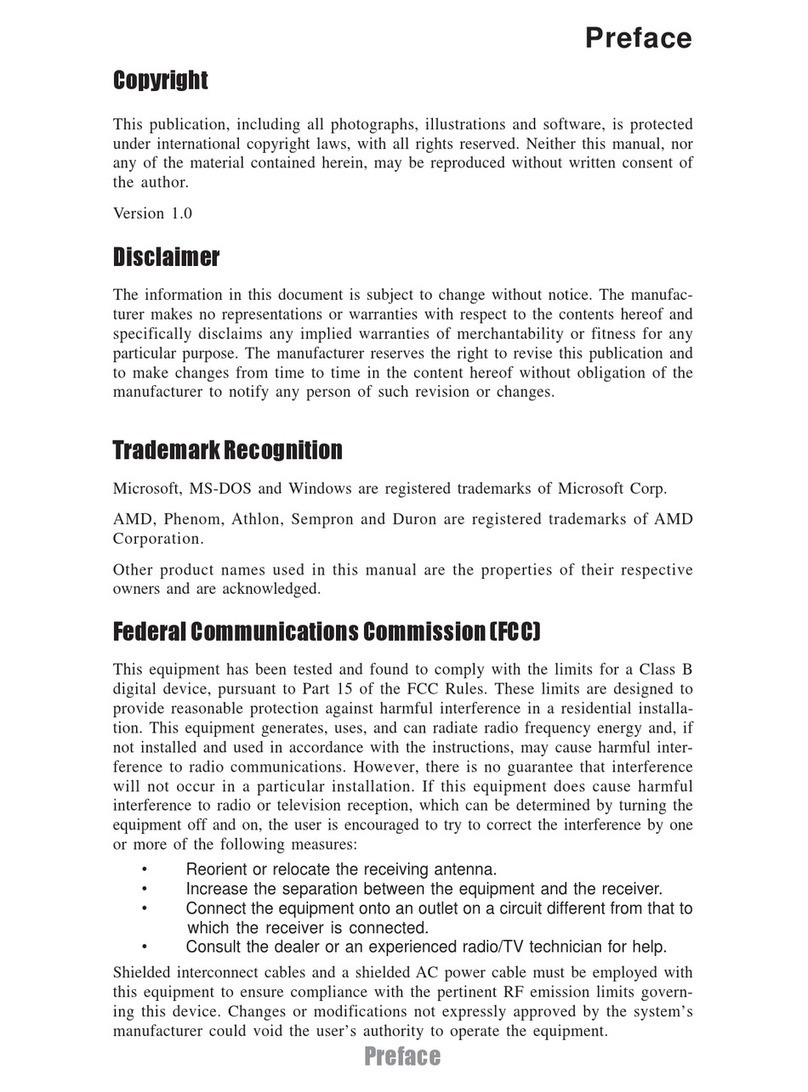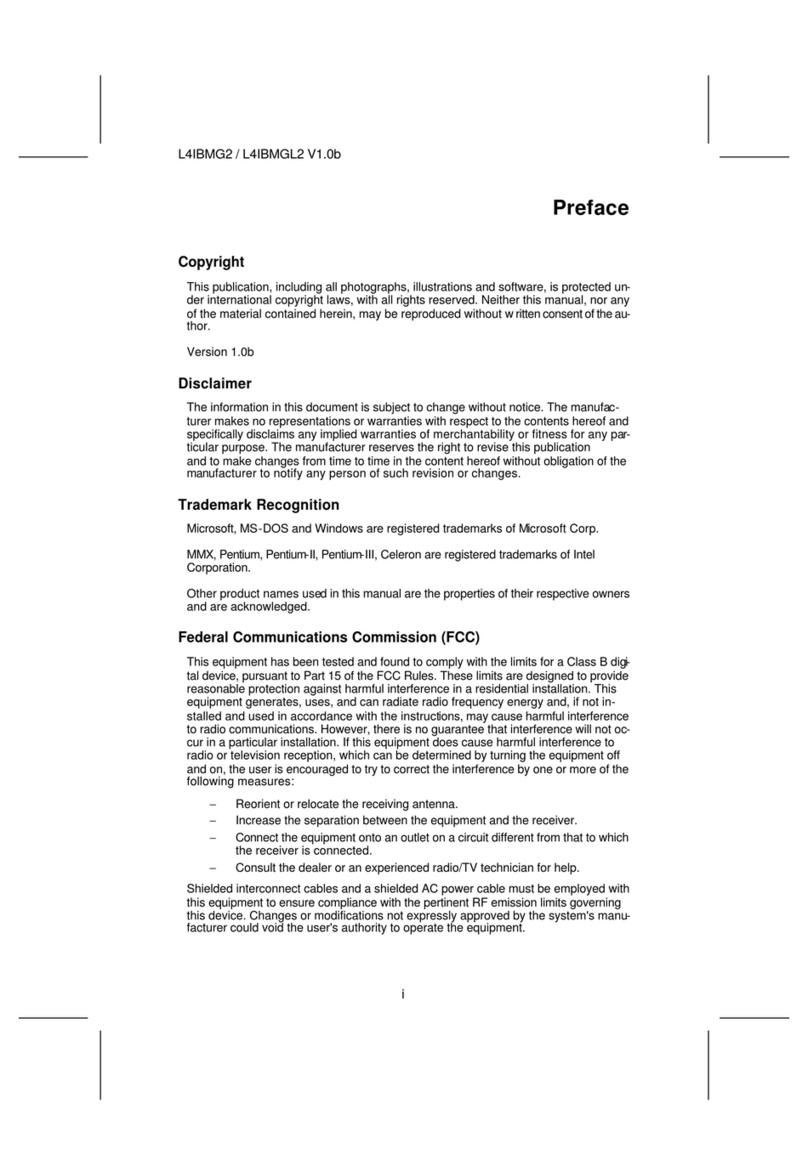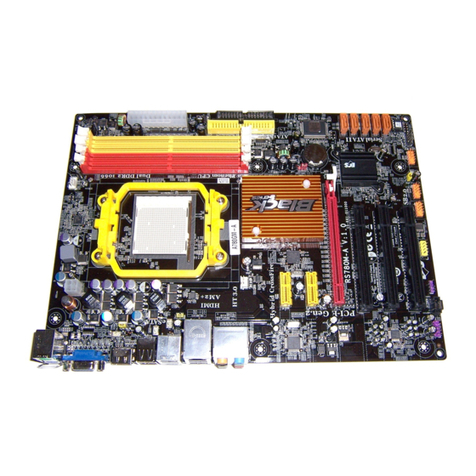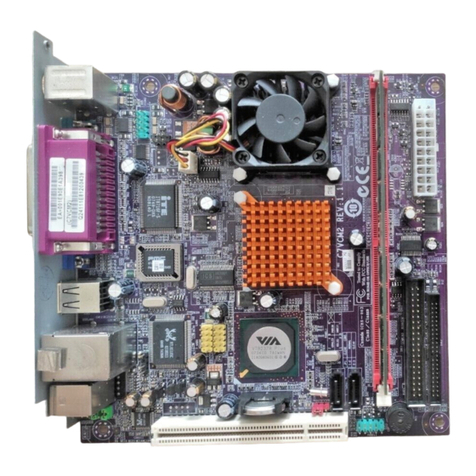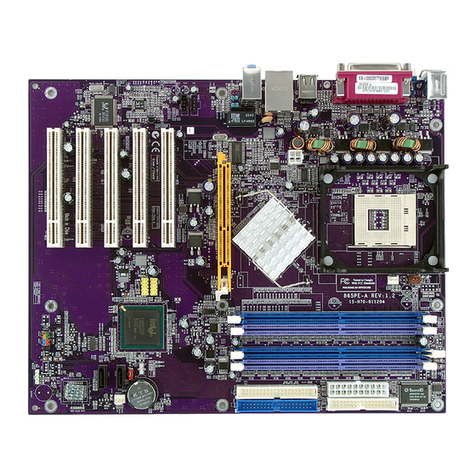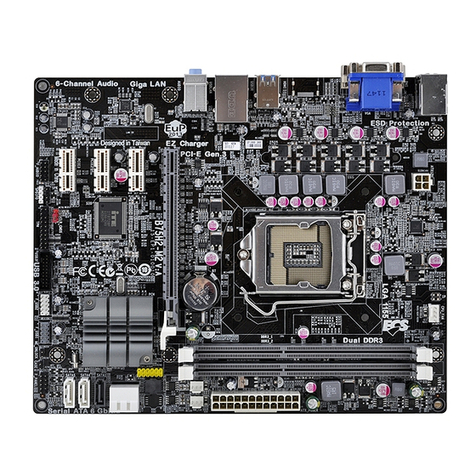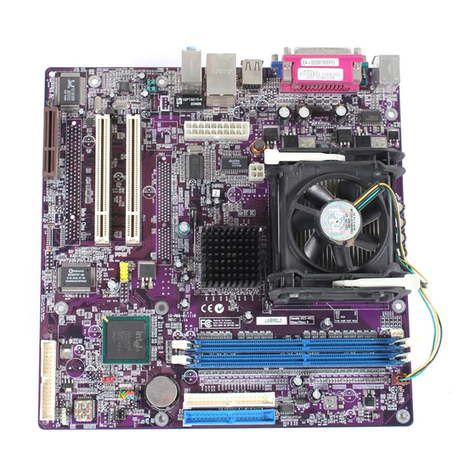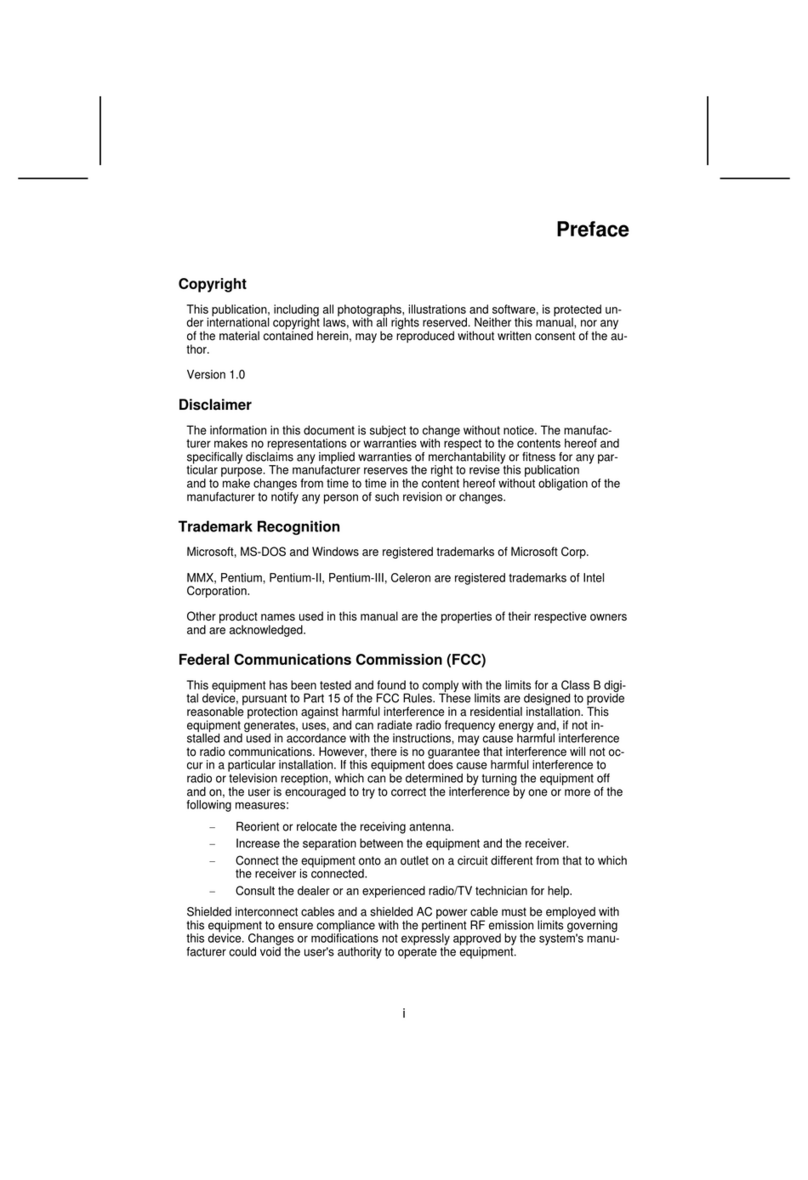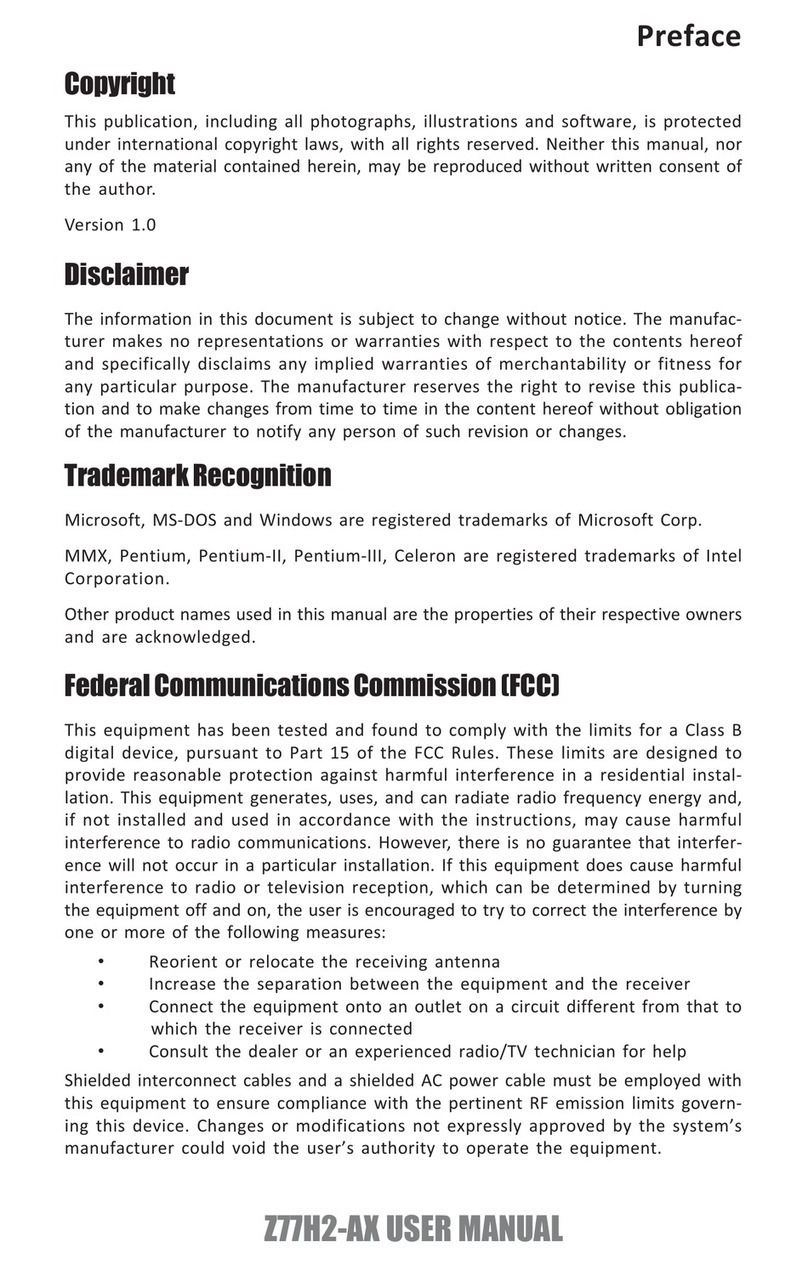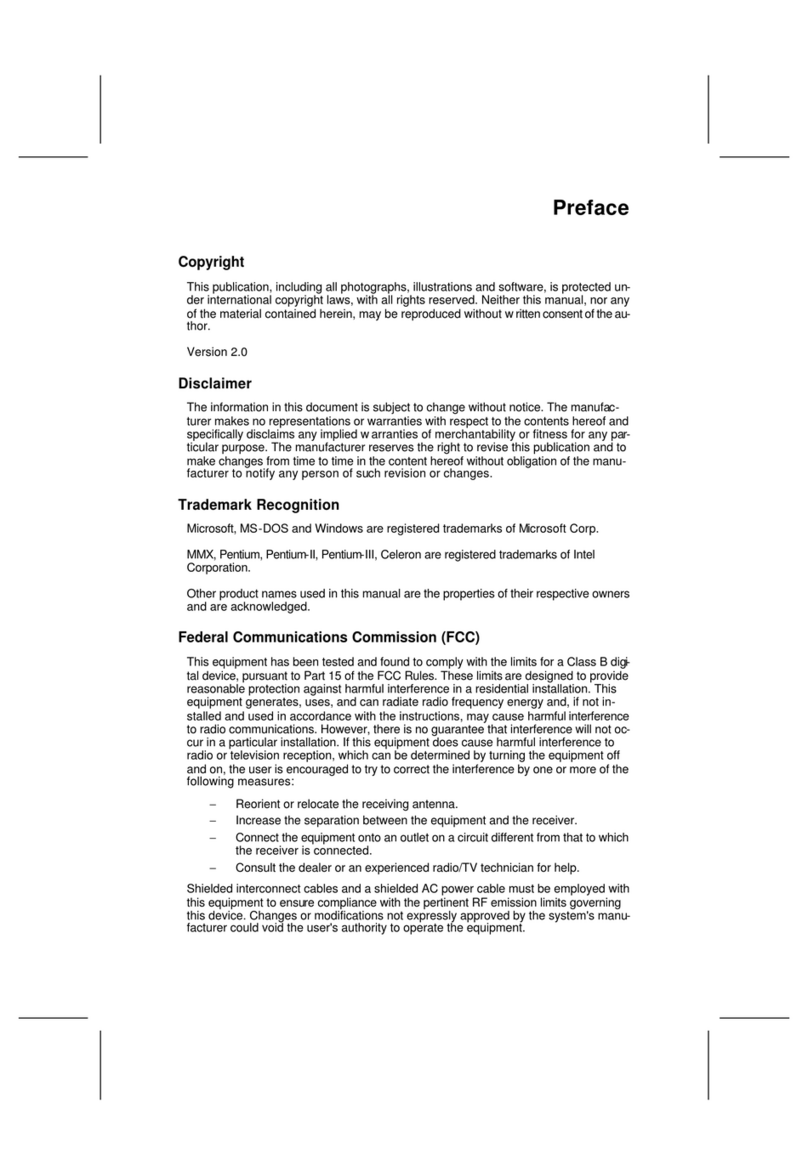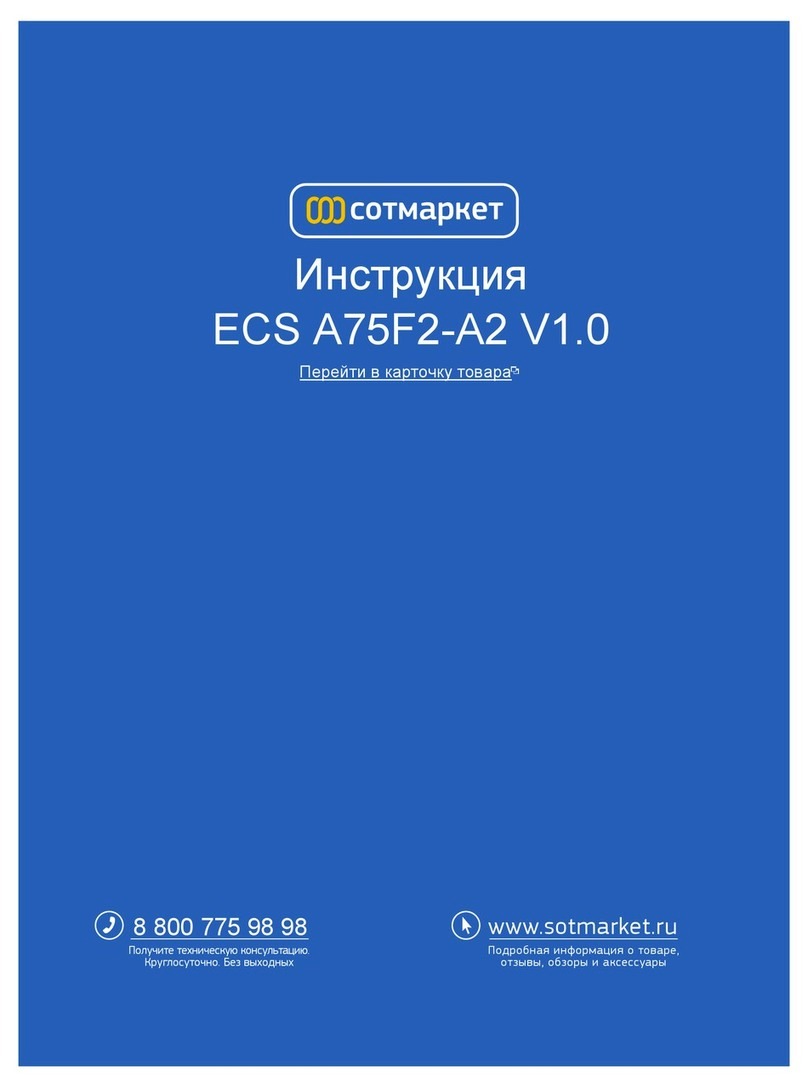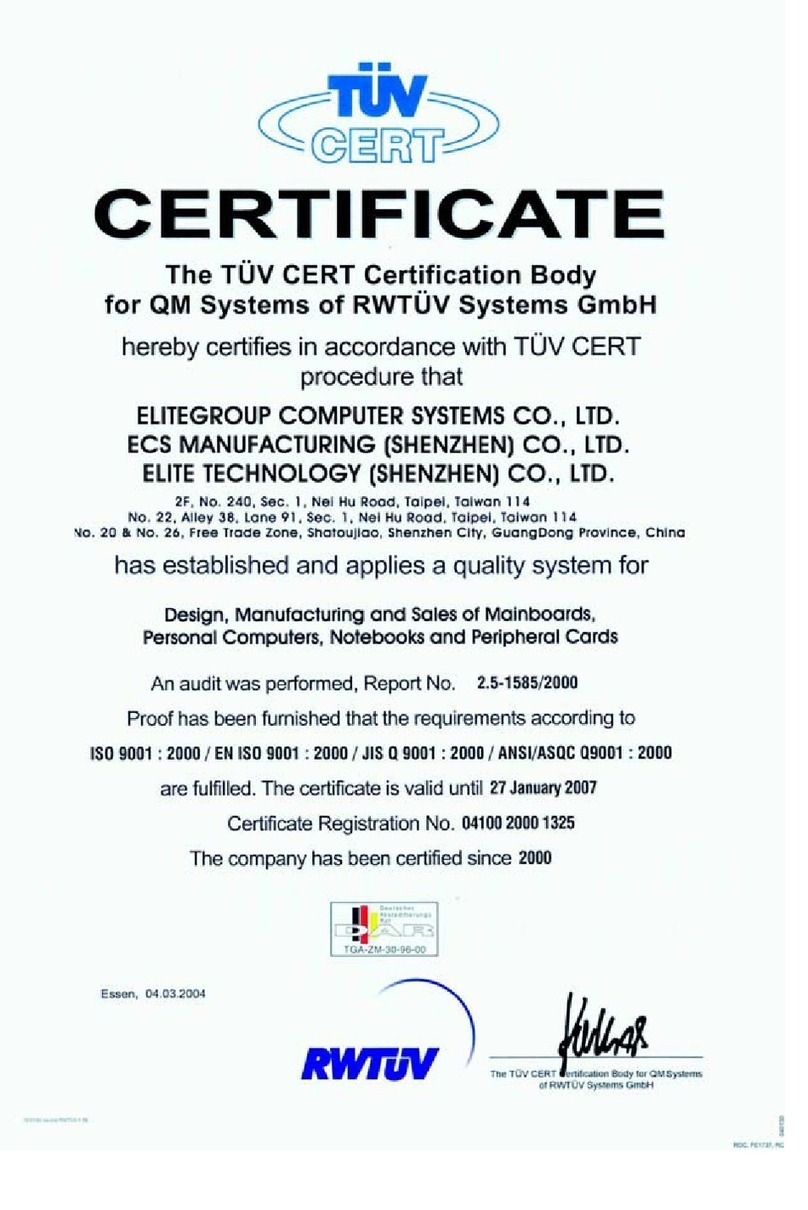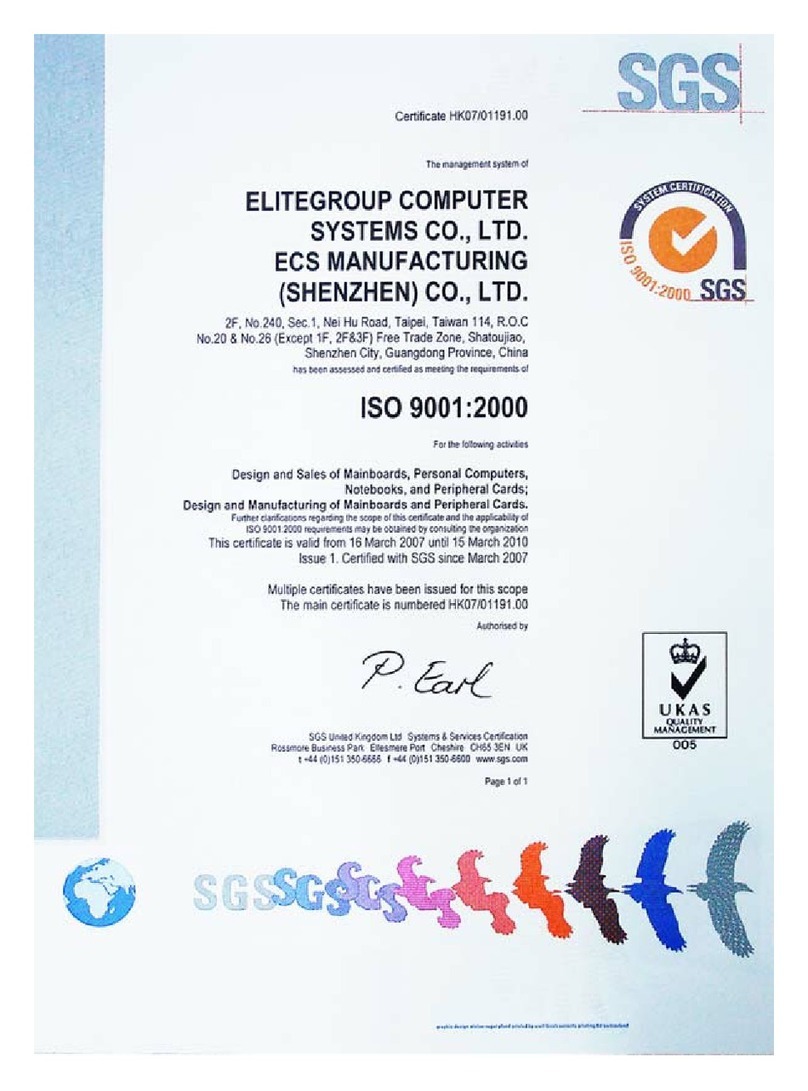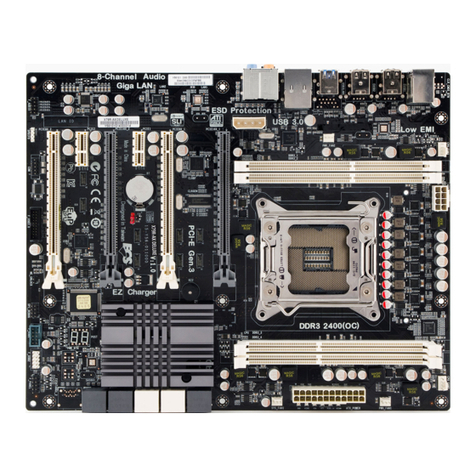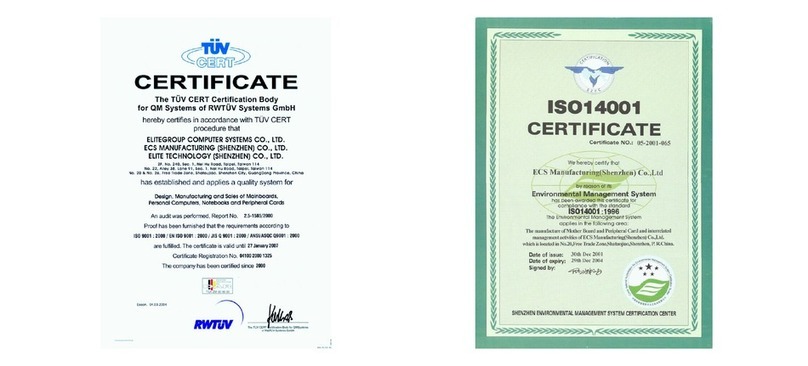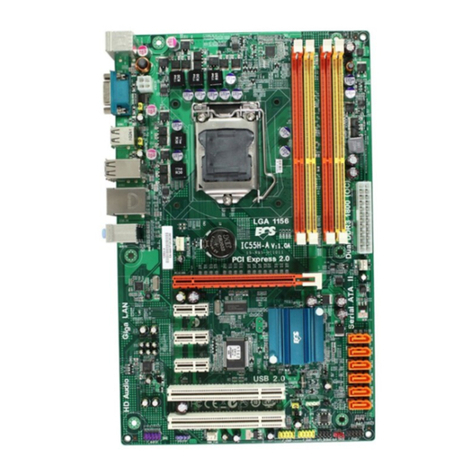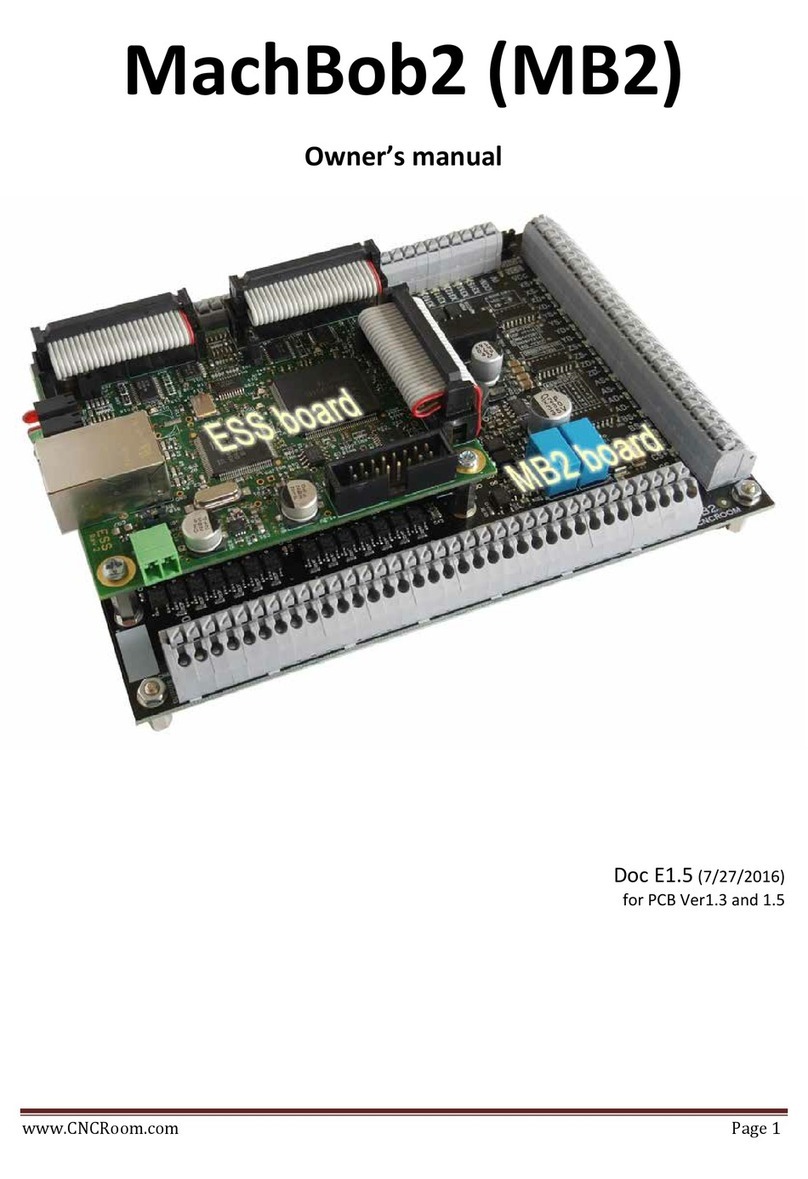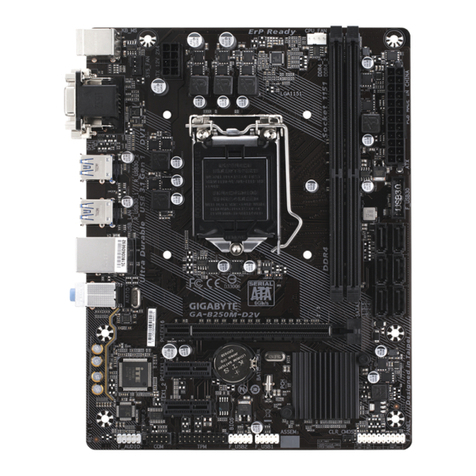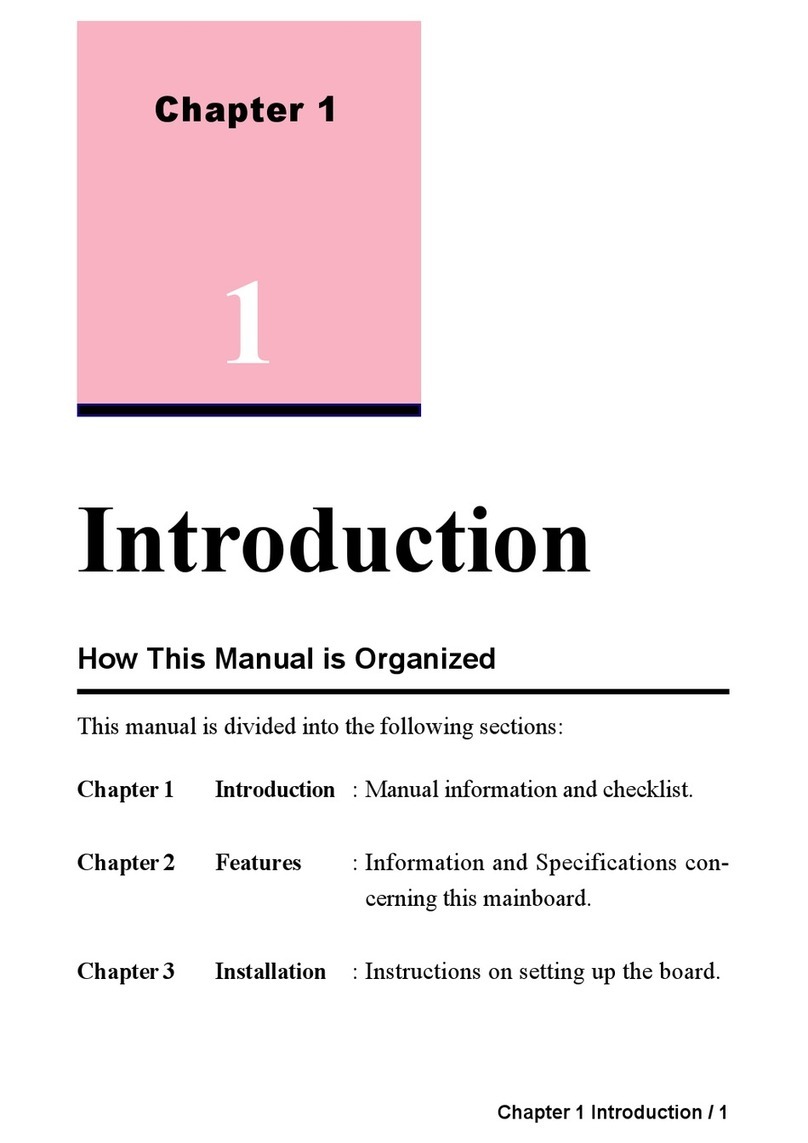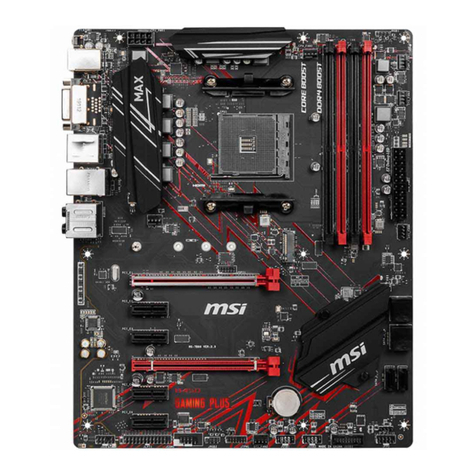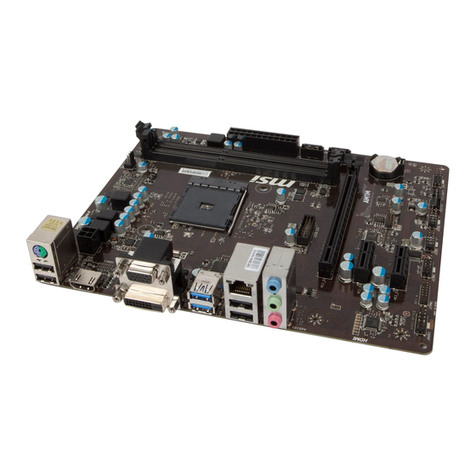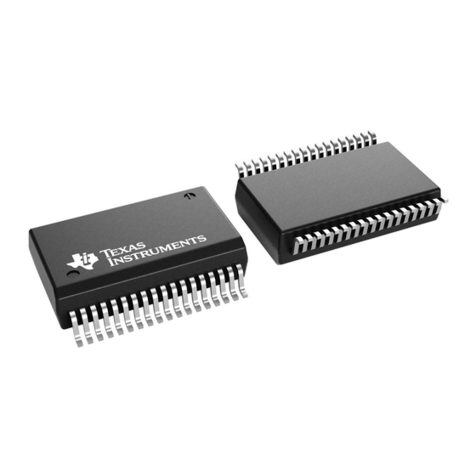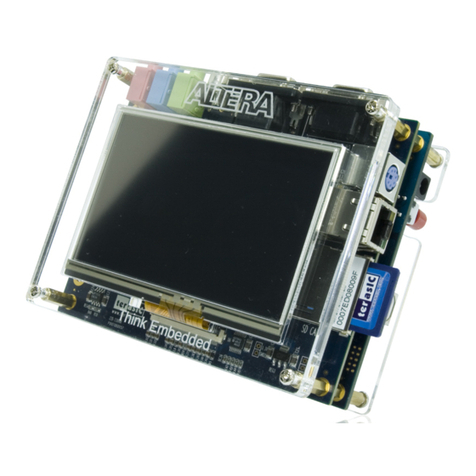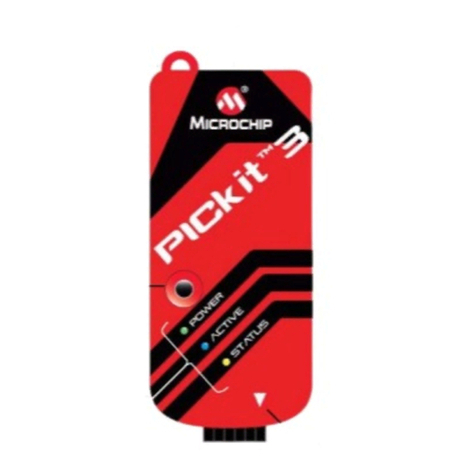ECS ES4M Series User manual

Mainboard User’s Manual
This publication, including all photographs, illustrations and
software, is protected under international copyright laws, with all
rights reserved. Neither this manual, nor any of the material
contained herein, may be reproduced without written consent of the
author.
The information in this document is subject to change without
notice. The manufacturer makes no representations or warranties
with respect to the contents hereof and specifically disclaims any
implied warranties of merchantability or fitness for any particular
purpose. Further, the manufacturer reserves the right to revise this
publication and to make changes from time to time in the content
hereof without obligation of the manufacturer to notify any person
of such revision or changes.
Trademarks
IBM, VGA, and PS/2 are registered trademarks of International
Business Machines.
Intel, Pentium/II/III, Pentium 4, Celeron and MMX are registered
trademarks of Intel Corporation.
Microsoft, MS-DOS and Windows 98/ME/NT/2000/XP are
registered trademarks of Microsoft Corporation.
PC-cillin is a registered trademark of Trend Micro Inc.
AMI is a registered trademark of American Megatrends Inc.
MediaRing Talk is a registered trademark of MediaRing Inc.
SiS is a trademark of Silicon Integrated System Corporation.
Other names used in this publication may be trademarks and are
acknowledged.
Copyright © 2002
All Rights Reserved
ES4M Series, V1.3
S650GL/December 2002

Mainboard User’s Manual
II
Notice:
Owing to Microsoft’s certifying schedule is various to every
supplier, we might have some drivers not certified yet by
Microsoft. Therefore, it might happen under Windows XP that a
dialogue box (shown as below) pop out warning you this
software has not passed Windows Logo testing to verify its
compatibility with Windows XP. Please rest assured that our RD
department has already tested and verified these drivers. Just
click the “Continue Anyway” button and go ahead the
installation.

Mainboard User’s Manual
III
Table of Contents
Trademarks .............................................................................. I
Chapter 1: Introduction....................................................................1
Key Features............................................................................2
Package Contents.....................................................................6
Static Electricity Precautions...................................................7
Pre-Installation Inspection.......................................................7
Chapter 2 : Mainboard Installation..................................................9
Mainboard Components ........................................................10
I/O Ports.................................................................................11
Install A CPU ........................................................................12
Installing Memory Modules ..................................................13
Setting Jumper Switches........................................................14
Install the Mainboard.............................................................15
Install the Extension Brackets ...............................................16
Optional Extension Brackets .................................................18
Install Other Devices .............................................................20
Expansion Slots .....................................................................22
Chapter 3: BIOS Setup Utility.......................................................23
Introduction ...........................................................................23
Running the Setup Utility ......................................................24
Standard CMOS Setup Page..................................................25
Advanced Setup Page ............................................................26
Power Management Setup Page ............................................28
PCI / Plug and Play Setup Page.............................................30
Load Optimal Settings...........................................................30
Load Best Performance Settings............................................31
Features Setup Page...............................................................31
CPU PnP Setup Page .............................................................33
Hardware Monitor Page.........................................................34
Change Password...................................................................35
Exit ........................................................................................35
Chapter 4: Using the Mainboard Software ....................................37
Introduction ...........................................................................37
Installing Support Software...................................................38
Bundled Software Installation ...............................................40

Mainboard User’s Manual
IV

1: Introduction
1
Chapter 1
Introduction
This mainboard has a Socket-478 processor socket for Intel
Pentium 4 type of processors supporting front side bus (FSB)
speeds up to 533 MHz.
This mainboard integrates the SiS650GL Northbridge along with
SiS962/962L Southbridge chipsets that support built-in AC97
Codec , one DDR266 SDRM modules up to 1GB system memory,
and provides Ultra DMA 66/100/133 function. These chipsets’
function is detailed as the Chipset description in next section. This
mainboard integrates a 256-bit 3D/2D Graphics Engine, Video
Accelerator and Advanced Hardware Acceleration
MPEGI/MPEGII Video Decoder for the Intel Pentium 4 series
based PC systems. It supports built-in 10BaseT/100BaseTX
Network Interface. In addition, this mainboard has a full set of
I/O ports including two PS/2 ports for mouse and keyboard, one
serial port, one parallel port, one VGA port, one IEEE1 port (only
for SiS962 SB) and six USB ports (USB2.0)– four back-panel
ports and onboard USB header USB1 providing two extra ports by
connecting the Extended USB Module to the mainboard.
This mainboard is Mini-Micro ATX size and has power
connectors for an ATX power supply and measures 177 x 190mm.

Mainboard User’s Manual
2
Key Features
The key features of this mainboard include:
Socket-478 Processor
♦The PGA Socket 478
♦Supports Intel Pentium 4 series CPUs
♦Supports up to 533 MHz Front-Side Bus
Chipset
There are SiS650GL Northbridge and SiS962/962L Southbridge in
this chipset in accordance with an innovative and scalable
architecture with proven reliability and performance.
Memory Support
♦One 184-pin DIMM socket for DDR266 memory
♦Support DDR SDRAM up to 266 MHz memory bus
♦Maximum installed memory is 1GB
Expansion Slots
♦One 32-bit PCI slots for PCI 2.2-compliant bus interface
Onboard IDE channels
♦Primary and Secondary PCI IDE channels
♦Support for PIO (programmable input/output) modes
♦Support for Multiword DMA modes
♦Support for Bus Mastering and Ultra DMA ATA
66/100/133 modes
Power Supply and Power Management
♦ATX power supply connector
♦Meets ACPI 1.0b and APM 1.2 requirements, keyboard
power on/off
♦Supports RTC Alarm, Wake On Modem, AC97 Wake-Up
and USB Wake-Up

1: Introduction
3
Onboard VGA
♦Supports high performance & high quality 3D
Accelerator—A built-in 256-bit 3D engine, up to 143 MHz
3D engine clock speed
♦Supports high performance 128-bit 2D Accelerator—Ultra-
AGPIITM 2GB/s data read for all 2D engine functions
♦Maximum Share Memory size is 32MB
AC97 Audio Codec
♦Compliant with AC’97 2.2 specification
♦Full-duplex Codec with independent and variable sampling
rate
♦Earphone Buffer Built-In, SNR up to 90db
♦4Ch DAC, support 4-channel speak-out
♦Advanced power management support
Built-in Ethernet LAN
♦Built-in 10BaseT/100BaseTX Ethernet LAN
♦SiS962/962L Embedded Fast Ethernet MAC and onboard
Realtek RTL8201 LAN PHY compliant with IEEE802.3u
100BASE-TX, 10BASE-T and ANSI X3.263 TP-PMD
standards
♦Compliant with ACPI 1.0 and the Network Device Class
Power Management 1.0
♦High Performance provided by 100Mbps clock generator
and data recovery circuit for 100Mbps receiver
Onboard I/O Ports
The mainboard has a full set of I/O ports and connectors:
♦Two PS/2 ports for mouse and keyboard
♦One serial port
♦One VGA port
♦One parallel port
♦Supports IEEE1394a port (only for SiS962 SB)
♦Six USB ports (four back-panel ports, onboard USB
headers providing two extra ports)— USB2.0
♦Audio jacks for microphone, line-in and line-out

Mainboard User’s Manual
4
Hardware Monitoring
♦Built-in hardware monitoring for CPU & System
temperatures, fan speeds and mainboard voltages.
Onboard Flash ROM
♦Supports Plug and Play configuration of peripheral devices
and expansion cards
USB 2.0
♦Compliant with Universal Serial Bus Specification
Revision 2.0
♦Compliant with Intel’s Enhanced Host Controller
Interface Specification Revision 0.95
♦Compliant with Universal Host Controller Interface
Specification Revision 1.1
♦PCI multi-function device consists of two UHCI Host
Controller cores for full-/low-speed signaling and one
EHCI Host Controller core for high-speed signaling
♦Root hub consists 4 downstream facing ports with
integrated physical layer transceivers shared by UHCI and
EHCI Host Controller
♦Support PCI-Bus Power Management Interface
Specification release 1.1
♦Legacy support for all downstream facing ports
IEEE 1394a (only for SiS962 SB)
♦Fully supports provisions of IEEE1394-1995 for high-
performance serial bus and the P1394a draft 2.0 standard
♦Provides three fully compliant cables ports at 100/200/400
Mbits/s and available with one, two or three ports
♦Supports optional 1394 Annex J electrical isolation barrier
at PHY-link interface
♦Supports power-down feature to conserve energy in battery
powered application
♦Node power-class information signaling for system power
management

1: Introduction
5
Bundled Software
♦PC-Cillin2002 provides automatic virus protection under
Windows 98/ME/NT/2000/XP
♦MediaRing Talk provides PC to PC or PC to Phone
internet phone communication
♦PC DJ is a dual-MP3 player that enables users to actually
mix music right on their own personal computers.
♦Adobe Acrobat Reader V5.0 is the software to help users
read .PDF files.
Dimensions
♦Mini-Mcro ATX form factor 177 x 190 mm
Note: Hardware specifications and software items are
subject to change without notification.

Mainboard User’s Manual
6
Package Contents
Your mainboard package contains the following items:
The mainboard
The User’s Manual
One diskette drive ribbon cable
One IDE drive ribbon cable
Software support CD
Optional Accessories
You can purchase the following optional accessories for this
mainboard.
Extended USB module
Extended IEEE1394a module (only for SiS962 SB)

1: Introduction
7
Static Electricity Precautions
Components on this mainboard can be damaged by static
electricity. Take the following precautions when unpacking the
mainboard and installing it in a system.
1. Keep the mainboard and other components in their original
static-proof packaging until you are ready to install them.
2. During installation, wear a grounded wrist strap if possible. If
you don’t have a wrist strap, discharge static electricity by
touching the bare metal of the system chassis.
3. Handle the mainboard carefully by the edges. Avoid touching
the components unless it is absolutely necessary. During
installation put the mainboard on top of the static-protection
packaging it came in with the component side facing up.
Pre-Installation Inspection
1. Inspect the mainboard for damage to the components and
connectors on the board.
2. If you suspect that the mainboard has been damaged, do not
connect power to the system. Contact your mainboard vendor
and report the damage.

Mainboard User’s Manual
8

2: Mainboard Installation
9
Chapter 2
Mainboard Installation
To install this mainboard in a system, please follow the instructions
in this chapter:
Identify the mainboard components
Install a CPU
Install one or more system memory modules
Verify that all jumpers or switches are set correctly
Install the mainboard in a system chassis (case)
Connect any extension brackets or cables to connecting
headers on the mainboard
Install other devices and make the appropriate connections to
the mainboard connecting headers.
Note:
1. Before installing this mainboard, make sure jumper JP2 is
under Normal setting. See this chapter for information about
locating JP2 and the setting options.
2. Never connect power to the system during installation;
otherwise, it may damage the mainboard.

Mainboard User’s Manual
10
Mainboard Components
This diagram identifies major components on the mainboard.
Note 1: Any jumpers on your mainboard that do not appear
in the illustration above are for testing only.
Note 2: The mainboard supports IEEE1394a only when
SiS962 Southbridge is installed.

2: Mainboard Installation
11
I/O Ports
The illustration below shows a side view of the built-in I/O ports
on the mainboard.
PS/2 Mouse Use the upper PS/2 port to connect a PS/2
pointing device.
PS/2 Keyboard Use the lower PS/2 port to connect a PS/2
keyboard.
LPT1 Use LPT1 to connect printers or other
parallel communications devices.
COM1 Use the COM port to connect serial devices
such as mice or fax/modems. COM1 is
identified by the system as COM1.
VGA Use the VGA port to connect VGA devices.
1394a Port Use the 1394a port to connect any Firewire
devices. (only for SiS962 SB)
LAN Port Connect an RJ-45 jack to the LAN port to
connect your computer to the Network.
USB Ports Use the USB ports to connect USB devices.
Audio Ports Use the three audio ports to connect audio
devices. The first jack is for stereo Line-In
signal. The second jack is for stereo Line-
Out signal. The third jack is for Microphone.
(only for
SiS962 SB)

Mainboard User’s Manual
12
Install A CPU
This mainboard has a Socket-478 that supports Intel Pentium 4
series processors.
To ensure reliability, ensure that your processor has a
heatsink/cooling fan assembly.
Do neither try to install a Socket 370 processor nor a Socket 423 in
the Socket-478. A Socket 370 processor such as the Pentium III, or
Celeron, does not fit in the Socket 478.
The following processor is currently supported by this mainboard.
Intel P4 478: 1.4GHz ~ 2.8GHz and up, FSB: 533MHz
Installing a Socket-478 Processor
A processor installs into the ZIF (Zero Insertion Force) Socket-478
on the mainboard.
1. Locate the Socket-478 and CPUFAN FAN1. Pull the locking
lever out slightly from the socket and raise it to the upright
position.
2. On the processor, identify the Pin-1 corner by its beveled edge.
3. On the Socket-478, identify the Pin-1 corner. The Pin-1 corner
is at the top of the locking lever when it locked.
4. Match the Pin-1 corners and insert the processor into the
socket. No force is required and the processor should drop into
place freely.
5. Swing the locking lever down and hook it under the catch on
the side of the socket. This secures the CPU in the socket.
Socket
-
478
Pin
-
1 Corner
FAN1

2: Mainboard Installation
13
6. All processors should be installed with a combination
heatsink/cooling fan, connect the cable from the fan to the
CPU fan power connector FAN1.
Installing Memory Modules
This mainboard has one 184-pin 2.5V unbuffered DDR SDRAM
memory modules. The memory chips must be standard or
registered SDRAM (Synchronous Dynamic Random Access
Memory).
The CPU supports 100MHz system bus. The DDR SDRAM
DIMM can synchronously work with 100 MHz or operates over a
266 MHz system bus.
DDR SDRAM provides 800 MB/s or 1 GB/s data transfer rate
corresponding with the bus 100 MHz or 266 MHz. It doubles the
rate to 1.0 GB/s and 2.1 GB/s by transferring data on both the
rising and falling edges of the clock.
Installation Procedure
The mainboard has one memory module. You can install one
module in the socket with maximum 1GB system memory.
Refer to the following to install the memory module.
1. Push the latches on each side of the DIMM socket
down.
2. Align the memory module with the socket. The
DIMM socket is keyed with notches and the
DIMM is keyed with cutouts so that they can only
be installed correctly.
DIMM1

Mainboard User’s Manual
14
3. Check that the cutouts on the DIMM module edge
connector match the notches in the DIMM socket.
4. Install the DIMM module into the socket and press
it firmly down until it is seated correctly. The
socket latches are levered upwards and latch on to
the edges of the DIMM.
Setting Jumper Switches
Jumpers are sets of pins that can be connected together with
jumper caps. Jumper caps change the operating way of the
mainboard by changing the electronic circuits. If a jumper cap
connects two pins, these pins are SHORT; if it is removed, these
pins are OPEN.
Jumper JP2: Clear CMOS Memory
This jumper can clear the contents of the CMOS memory. You
may need to clear the CMOS memory if the settings in the Setup
Utility are incorrect and prevent your mainboard from operating.
To clear the CMOS memory, disconnect all the power cables from
the mainboard and then move the jumper cap into the CLEAR
setting for a few seconds.
Function Jumper Setting
Clear CMOS Short Pins 1-2
Normal Mode Short Pins 2-3
JP2
1
JP5
1

2: Mainboard Installation
15
1
JP1: Keyboard Power On
If the Keyboard Power On is enabled, hot keys on the keyboard
can work as a power on/off switch for the system.
Function Jumper Setting
Disabled Short Pins 1-2
Enabled Short Pins 2-3
Note: The system must supply at least 1A on the +5VSB (+5V
Standby) signal before enabling the Keyboard Power On function.
Install the Mainboard
Install the mainboard in a system chassis (case). The board is a
Mini-Micro ATX size mainboard. You can install this mainboard
in an ATX case. Ensure that your case has an I/O cover plate that
matches the ports on this mainboard. Install the mainboard in a
case. Follow the instructions provided by the case manufacturer
using the hardware and internal mounting points on the chassis.
Connect the power connector from the power supply to the
ATXPW1 connector on the mainboard.
If there is a cooling fan installed in the system chassis, connect the
cable from the cooling fan to the FAN2 fan power connector on the
mainboard.
ATXPW1
JP5
1
FAN2
FP1

Mainboard User’s Manual
16
Connect the case switches and indicator LEDs to the FP1 header.
Here is a list of the FP1 header’s pin assignments.
Pin Signal Pin Signal
1 HDLED+ 2 PWR/SLP+
3 HDLED- 4 PWR/SLP+
5 RSTGND 6 PSW+
7 RESET 8 PSW-
9 RESEV 10 KEY
If there are a headphone jack or/and a microphone jack on the front
panel, connect the cables to the JP5 header on the mainboard. Here
is a list of the JP5 header’s pin assignments.
Pin Signal Pin Signal
1 GND 2 GND
3 MICI 4 MICO
5 SPR 6 SPRO
7 SPL 8 SPLO
Install the Extension Brackets
The extension brackets connect features on the mainboard to
external connectors that can be attached to the system chassis.
Follow these steps below to install the extension brackets.
Note: All the ribbon cables used on the extension brackets have a
red stripe on the Pin-1 side of the cable.
Table of contents
Other ECS Motherboard manuals
Popular Motherboard manuals by other brands
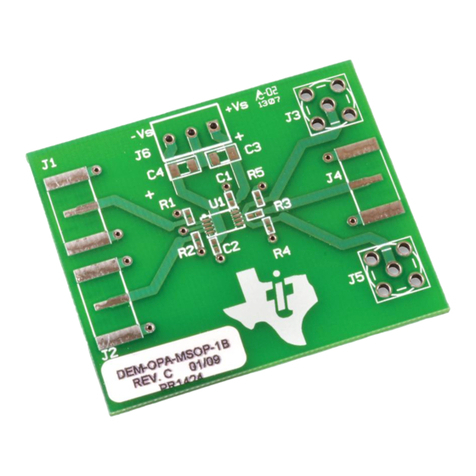
Texas Instruments
Texas Instruments DEM-OPA-MSOP-1B user guide
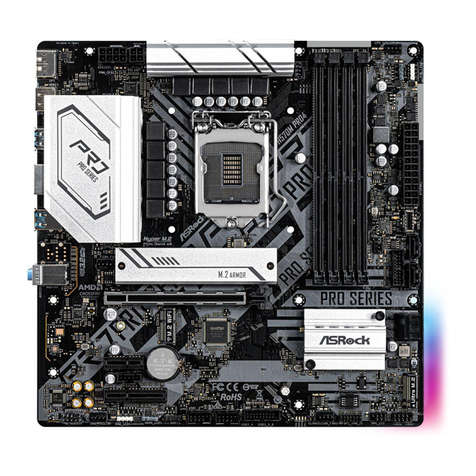
ASROCK
ASROCK H570M Pro4 manual

MSI
MSI B450 GAMING PRO CARBON AC quick start
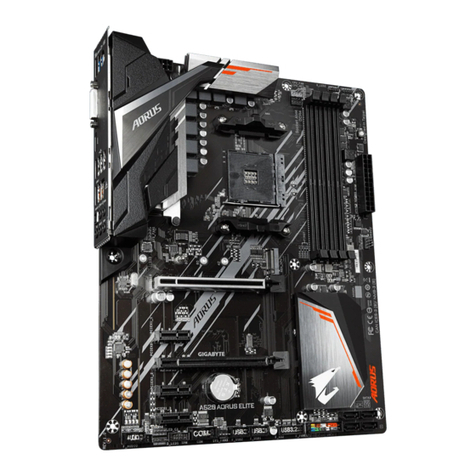
GIGA-BYTE TECHNOLOGY
GIGA-BYTE TECHNOLOGY A520 AORUS ELITE user manual
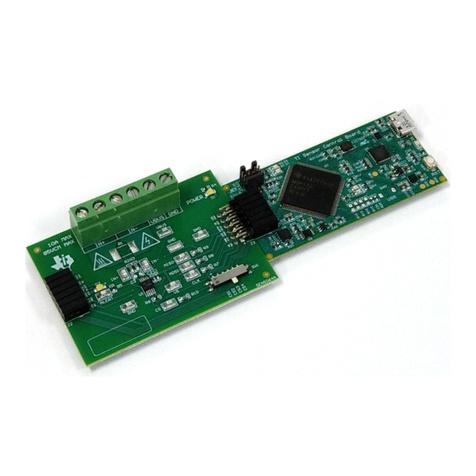
Texas Instruments
Texas Instruments INA228 user guide
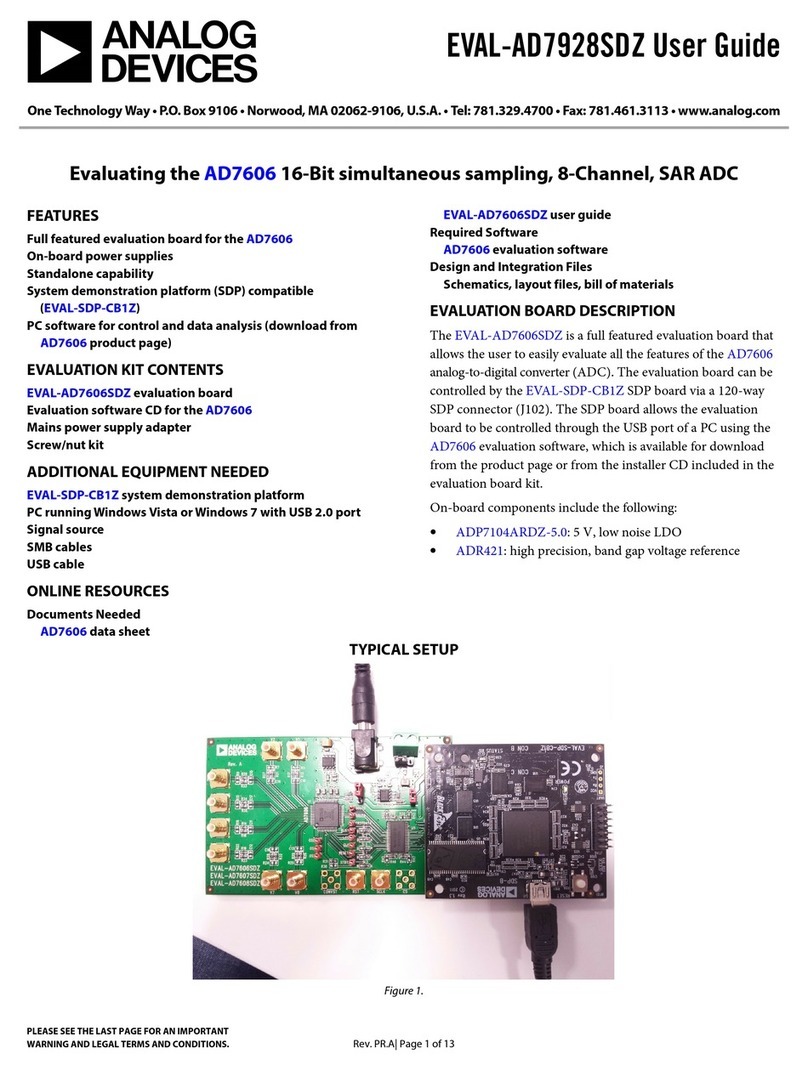
Analog Devices
Analog Devices EVAL-AD7928SDZ user guide
